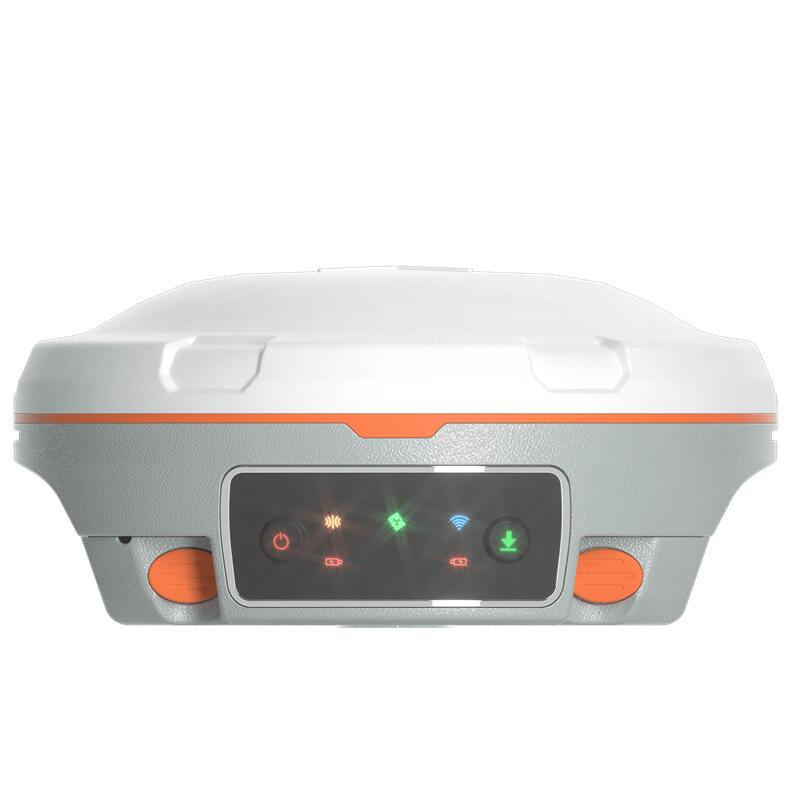Global Navigation Satellite System (GNSS) receivers have become indispensable tools for navigation, geospatial data collection, and positioning in various industries. However, in urban environments, where tall buildings and dense infrastructure are prevalent, the performance of these receivers can be compromised due to signal disruptions and obstructions. To maintain the accuracy and reliability of GNSS receivers in cities, it is essential to understand the challenges they face and the technological solutions that can enhance their performance.
Understanding Urban Challenges for GNSS Receivers
Urban environments present a unique set of challenges for GNSS receivers due to the complex landscape. Some of the key signal challenges include:
Multipath Interference: Multipath occurs when GNSS signals are reflected off surfaces like glass windows, concrete buildings, or metallic structures, creating multiple signal paths. This interference can distort the receiver’s perception of distance, resulting in inaccurate positioning.
Signal Blockages and Obstructions: Tall buildings and other structures can block direct line-of-sight (LOS) signals from satellites, reducing the number of visible satellites. This obstruction lowers the availability and accuracy of GNSS positioning in areas like skyscraper-lined streets or narrow alleyways.
Urban Canyons
An urban canyon refers to a street flanked by tall buildings on both sides, creating a tunnel-like effect. In such environments, GNSS receivers often have limited visibility to satellites, increasing the chances of signal loss or degradation.
Signal Attenuation: Construction materials such as concrete, steel, and glass attenuate GNSS signals, making them weaker and more prone to disruptions. This results in signal fading, which further complicates reliable data acquisition.
Spoofing and Jamming: Urban areas are susceptible to GNSS signal spoofing or jamming, which can mislead receivers into calculating incorrect positions or completely losing signals.
Overcoming Signal Challenges: Technological Solutions for GNSS Receivers
To combat these challenges, GNSS receiver manufacturers and researchers have developed advanced technologies and strategies. Some of the most effective solutions include:
Multi-Constellation Support
One approach is to design GNSS receivers that can access multiple satellite constellations, such as GPS (USA), GLONASS (Russia), Galileo (Europe), and BeiDou (China). By leveraging more satellites from different constellations, urban receivers can increase the number of visible satellites, improving accuracy even in densely built areas.
Multi-Frequency Capability
Traditional GNSS receivers typically operate on a single frequency band, such as L1. However, multi-frequency receivers that can access bands like L2, L5, and E6 can help mitigate multipath interference and ionospheric delays. This multi-frequency capability enables the receiver to filter out erroneous signals and enhance positioning reliability.
Advanced Antenna Designs
High-quality, multipath-resistant GNSS antennas are crucial for urban environments. These antennas are designed to minimize reflections and focus on the direct line-of-sight signals from satellites, helping reduce errors caused by multipath effects.
Real-Time Kinematic (RTK) and Precise Point Positioning (PPP)
RTK and PPP are advanced correction methods that can significantly improve the accuracy of GNSS receivers in urban settings. RTK uses nearby reference stations to provide real-time corrections, while PPP applies precise satellite orbit and clock corrections. These techniques allow GNSS receivers to achieve centimeter-level accuracy even in challenging environments.
Integration with Inertial Measurement Units (IMUs)
GNSS/IMU integration combines the benefits of satellite-based navigation with an inertial navigation system (INS). IMUs can maintain positioning continuity when GNSS signals are weak or temporarily unavailable, using accelerometers and gyroscopes to estimate position changes. This integration is particularly useful in urban canyons where GNSS signals may frequently drop out.
Machine Learning and AI
Machine learning algorithms can be used to detect and compensate for signal errors in real-time. By analyzing patterns in received signals, AI can help distinguish between direct LOS signals and reflected multipath signals, improving the overall accuracy of GNSS receivers in complex environments.
Multi-Sensor Fusion: Incorporating other positioning technologies like Wi-Fi, Bluetooth, and Ultra-Wideband (UWB) can augment GNSS receivers in urban areas. This multi-sensor fusion approach provides additional sources of position data, allowing the receiver to cross-check and validate GNSS-derived positions for greater robustness.
Applications of GNSS Receivers in Urban Environments
Despite the challenges, GNSS receivers are widely used in a variety of urban applications. Some of the most prominent use cases include:
Smart City Infrastructure: GNSS receivers are integral to smart city projects, providing precise location data for asset management, traffic monitoring, and emergency response coordination. By combining GNSS with IoT (Internet of Things) devices, urban planners can create interconnected systems that optimize resource usage and improve city operations.
Autonomous Vehicles: Self-driving cars and autonomous drones rely heavily on GNSS receivers for navigation. In urban environments, where continuous GNSS coverage is critical, multi-frequency receivers with high-precision correction services ensure safe and reliable navigation.
Construction and Surveying: Urban construction projects often require GNSS receivers for site surveying and machine guidance. Multi-frequency GNSS receivers with RTK capabilities enable precise measurements, minimizing errors in site layout and excavation.
Pedestrian Navigation
GNSS receivers in smartphones and wearable devices help pedestrians navigate complex city environments. By combining GNSS with other positioning technologies, these receivers provide accurate guidance for users navigating dense urban areas.
Public Safety and Emergency Response: Accurate GNSS positioning is vital for emergency response teams in urban areas. It ensures that responders can quickly locate incidents, navigate through traffic, and reach affected areas with minimal delays.
The Future of GNSS Receivers in Urban Environments
The future of GNSS receivers in urban environments looks promising, thanks to continuous advancements in technology. Upcoming innovations such as satellite-based augmentation systems (SBAS), advanced multi-frequency solutions, and AI-powered signal processing will further enhance the reliability and accuracy of GNSS receivers. These developments will enable new applications in areas like urban air mobility, automated logistics, and smart infrastructure management.
Moreover, the integration of GNSS receivers with 5G technology and IoT networks will pave the way for a more connected and automated urban ecosystem. With the convergence of these technologies, GNSS receivers will continue to play a critical role in transforming urban navigation and location-based services.




